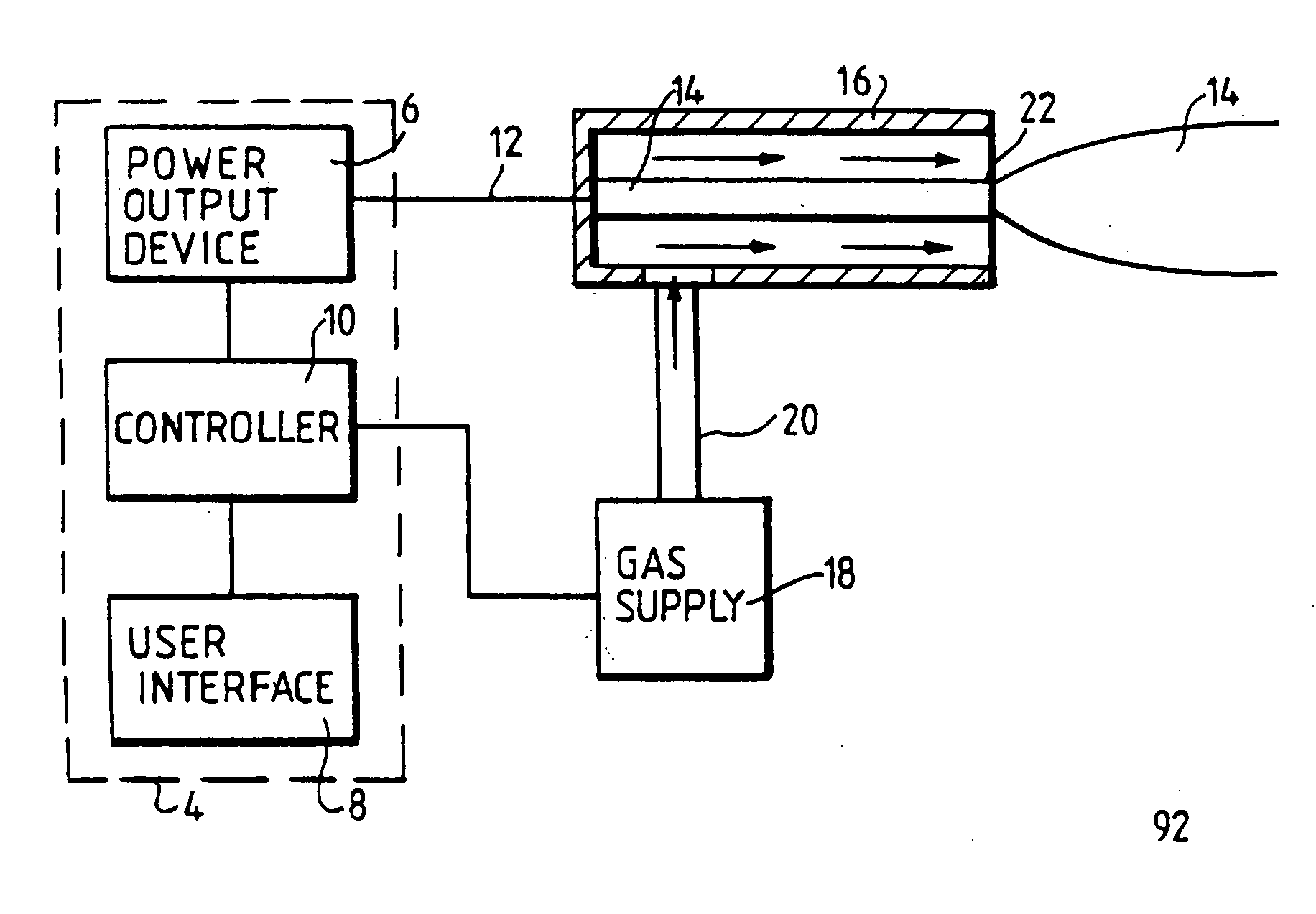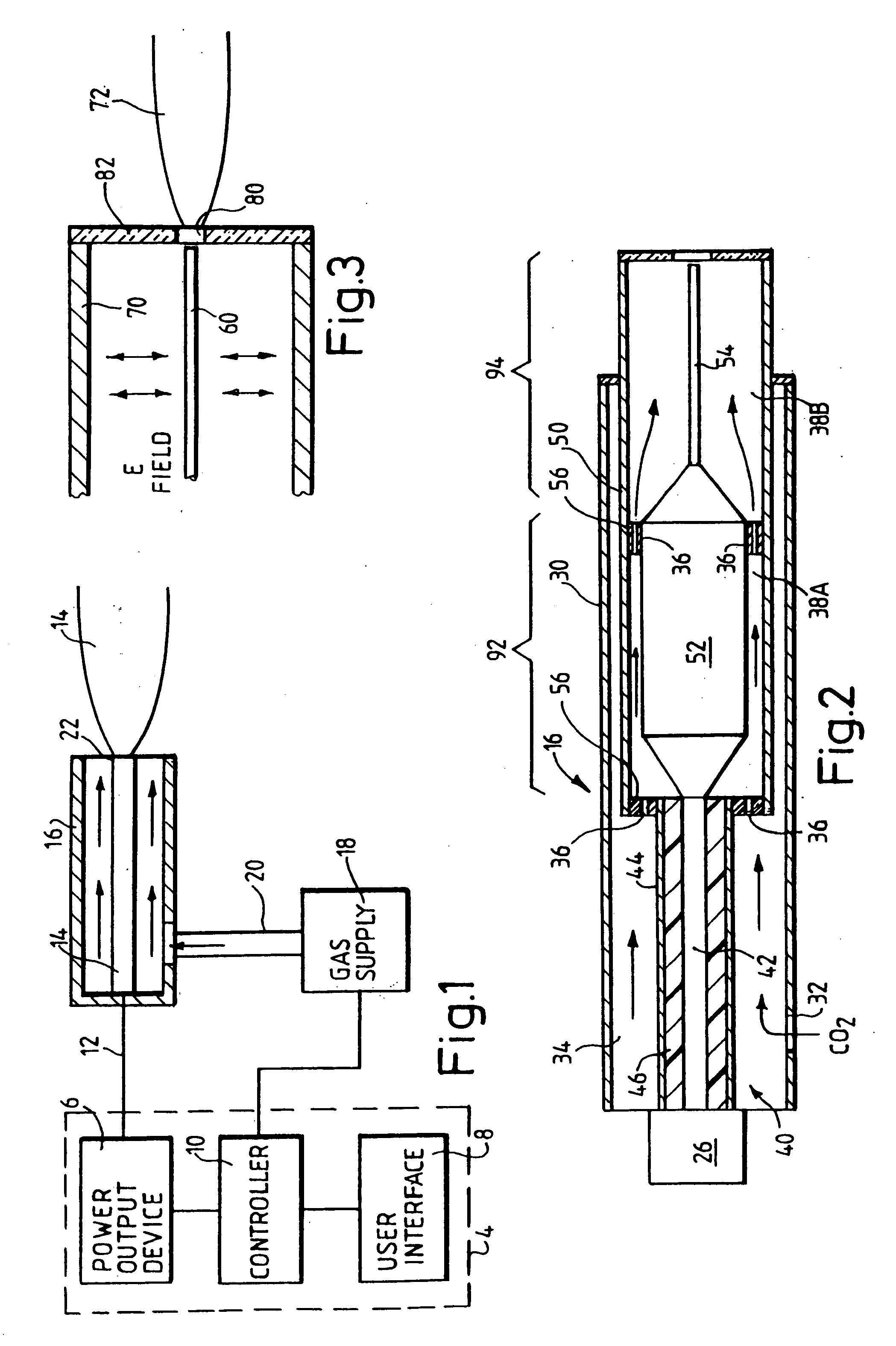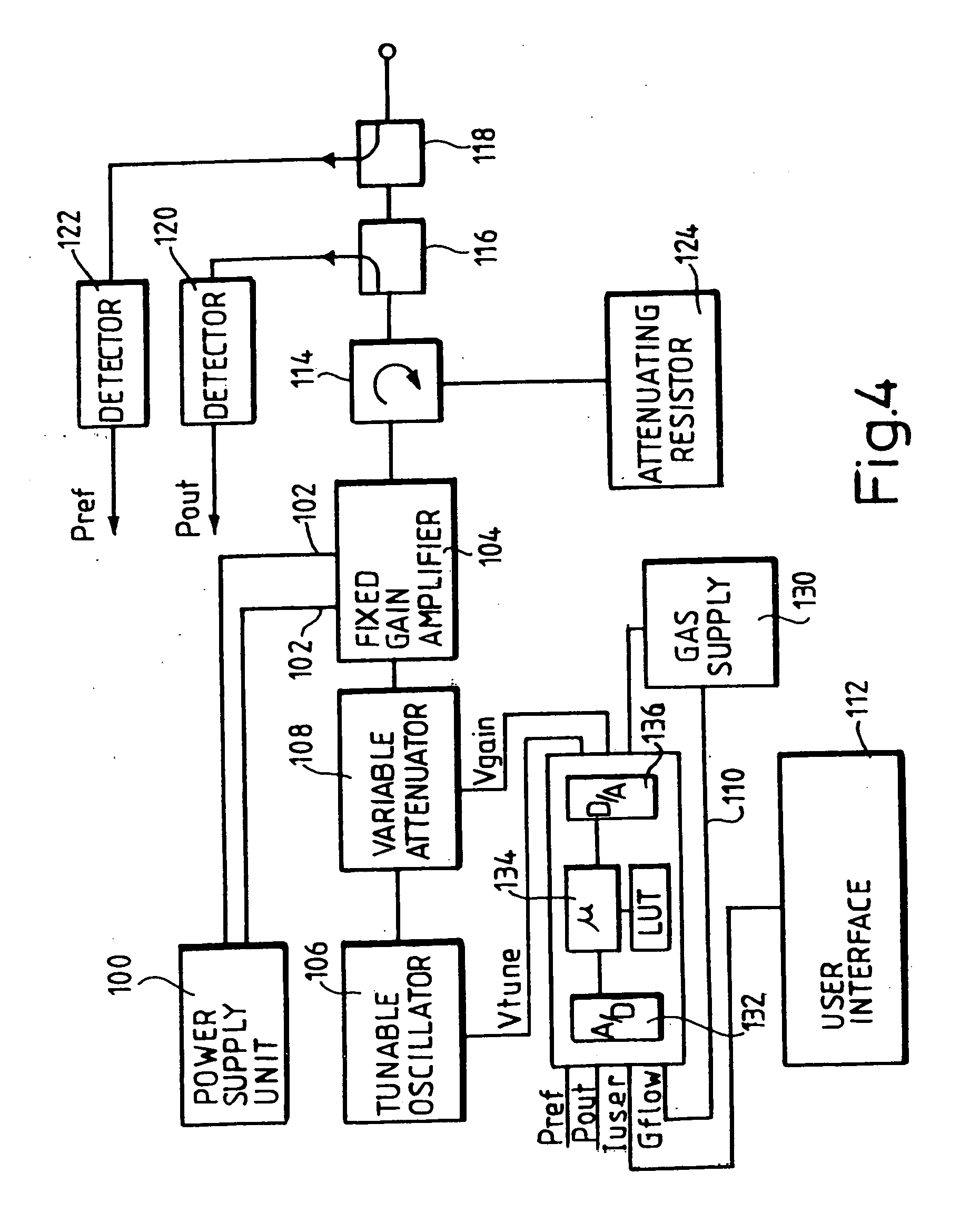Tissue resurfacing
a tissue resurfacing and tissue technology, applied in the field of tissue resurfacing, can solve the problems of scar tissue on the skin, increase in the temperature of the skin, and detrimental to the attractiveness of the skin, so as to minimize the possibility of variations in the energy being delivered, maximize the life of the instrument, and avoid the effect of degradation
- Summary
- Abstract
- Description
- Claims
- Application Information
AI Technical Summary
Benefits of technology
Problems solved by technology
Method used
Image
Examples
Embodiment Construction
[0078] Referring to FIG. 1, the principle of operation of embodiments of the invention will now be described. A surgical system comprises a generator 4 which includes a power output 6, typically in the form of an oscillator and an amplifier, or a thermionic power device, and a user interface 8 and a controller 10. The generator produces an output which is coupled via a feed structure including a cable 12 to an electrode 14 of an instrument 16. The system further includes a supply 18 of gas, which is supplied to the instrument by means of a pipe 20. The gas is preferably a gas that enables relatively high energy to be delivered to the tissue per unit energy delivered into the gas at the instrument. Preferably the gas should include a diatomic gas (or gas having more than two atoms), for example, nitrogen, carbon dioxide or air. In use, the generator operates to establish an electric field in the region of the tip 22 of the electrode. Gas from the supply 18 is passed through the elect...
PUM
 Login to View More
Login to View More Abstract
Description
Claims
Application Information
 Login to View More
Login to View More - R&D
- Intellectual Property
- Life Sciences
- Materials
- Tech Scout
- Unparalleled Data Quality
- Higher Quality Content
- 60% Fewer Hallucinations
Browse by: Latest US Patents, China's latest patents, Technical Efficacy Thesaurus, Application Domain, Technology Topic, Popular Technical Reports.
© 2025 PatSnap. All rights reserved.Legal|Privacy policy|Modern Slavery Act Transparency Statement|Sitemap|About US| Contact US: help@patsnap.com



